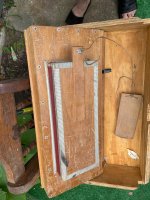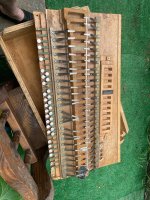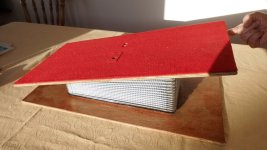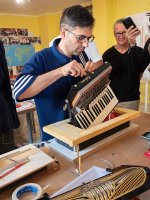szunajski
Member
Hi All,
i hope you are doing well!
I happened to buy few accordions from a one person. He gave me for free tuning table.
The tuning table looks soo big and bulky and not sure what to do with it.
Do you guys know anything about it? I need tuning table but not this big. Do you think i should keep this one or build something more compact?
Also, can you please share pictures of tuning tables you use? (So i can steal your design? )
)
Thank oyu,
Regards!
i hope you are doing well!
I happened to buy few accordions from a one person. He gave me for free tuning table.
The tuning table looks soo big and bulky and not sure what to do with it.
Do you guys know anything about it? I need tuning table but not this big. Do you think i should keep this one or build something more compact?
Also, can you please share pictures of tuning tables you use? (So i can steal your design?
Thank oyu,
Regards!




